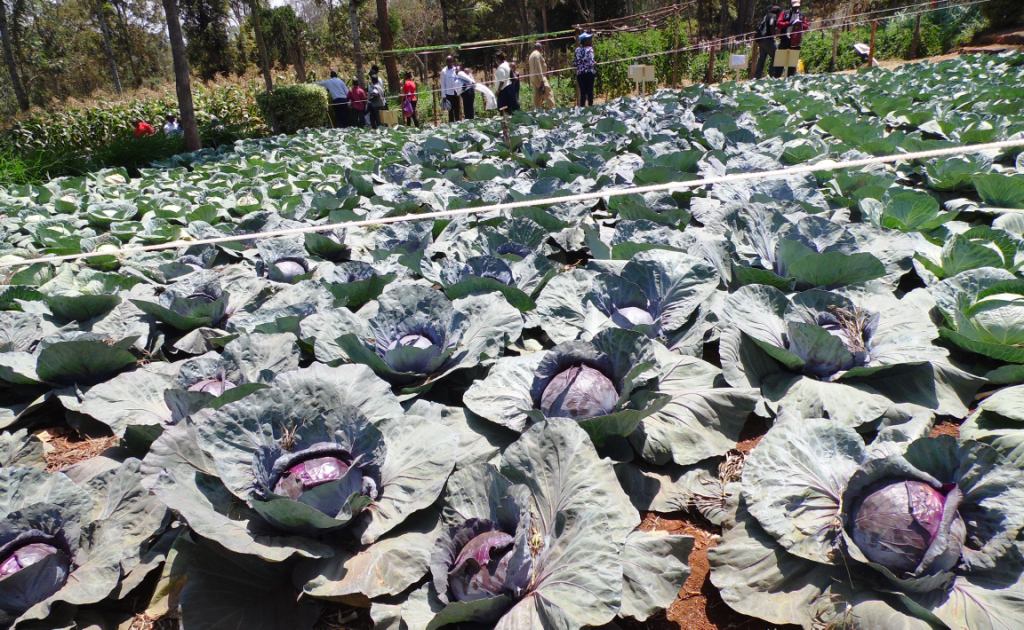Red cabbage at Nyeri ASK Showground in 2016. Cabbage is earning three times more in Mombasa. Photo by Laban Robert.
Although the supply of vegetables has been regaining from an early year drop since April after the rains, coast region residents continue paying more than double the cost than inland consumers.
While a 126kg bag of cabbages is costing Sh1,200 in Nakuru, the same quantity is costing Sh4,100 in Mombasa, the biggest city in the coast region.
In Malindi, a town to the north of Mombasa, is paying Sh3,700 for the same quantity of cabbage on wholesale.
In Nairobi, one kilo of the cabbage is costing Sh12 while the same quantity is fetching Sh15 and Sh10 in Kisumu and Eldoret.
These being wholesale prices, consumers in the coastal strip are paying slightly higher prices for the same vegetables.
The interior towns are enjoying lower prices than those at the coast region because the latter do not have much land under cultivation. They rely on inter-county importation, and transportation and other charges increase the price of the goods.
Nakuru for instance, is one of the leading producers of agro-products in Kenya.
READ ALSO: Farmer soars with Chinese cabbage
READ ALSO: Green maize cost hits Sh8,000 in Mombasa
READ ALSO: FACT SHEET: High yielding cabbage variety
The prices of fresh produce, and indeed other farm products have been high since November last year when the drought set in ravaging crops in the fields.
The main planting season in Kenya is from January to March. Farmers without irrigation plans suffered until the end of March this year, when the rains resumed.
Maize still remains unavailable even after the government lifted import duty to ensure that enough is imported to fill the deficit.
Fresh milk, which hit a high of Sh65 per packet of half a litre, has dropped to between Sh50 and 55 depending on the brand.
Food shortage may persist this year with the rains remaining unreliable through the country. This will keep the prices still high and consumers paying more for the goods.
